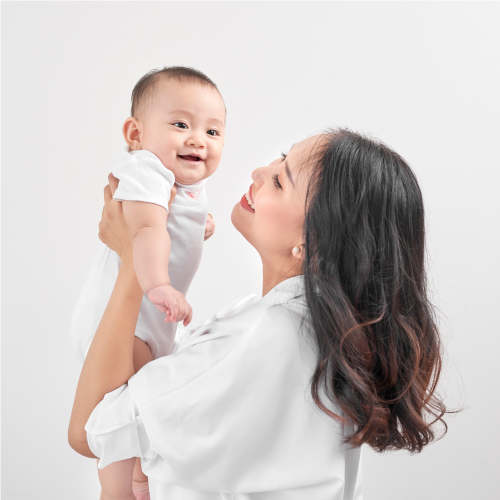
If your baby was born more than 3 weeks early, they are considered premature. Having a preemie baby means you have to adjust your baby’s age to get a true sense of where your little one should be developmentally.
How to calculate your baby’s adjusted age
It is important to track the development of premature babies by using their adjusted age, especially for the first two years. To do this, you have to deduct the number of weeks early that your baby was born from your baby’s actual age (number of weeks since birth). This will give you the adjusted age or corrected age.
(Actual age in weeks) – (Weeks born early) = (Adjusted age)
For example, if your baby was born 4 weeks early and it’s been 12 weeks since the delivery date, their adjusted age will be:
12 weeks (3 months) – 4 weeks = 8 weeks (2 months)
As you calculate your baby’s adjusted age, keep in mind that the number of months is based on a 4-week month. Most children will also have caught up to their typical milestones by the age of two, which means you should be able to stop adjusting their age by that time. If your child won’t have caught up by 2 years of age, they will need some extra support for longer.
List of developmental milestones
If you have a preterm baby, use their adjusted age to track their development until they turn two years old. This way, their development will take into account the fact that they were born early.
Here is a list of developmental milestones by age. This list includes milestones from 1 month (4 weeks) to 2 years.
1 month (4 weeks)
- Can follow the parent with their eyes
- Can self comfort by bringing their hands to their mouth
- Fusses when bored, calms when soothed
- Can look at objects briefly
- Can make brief vowel sounds
- Is sensitive to their environment. Cries or startles at sounds
- Cries differently for hunger and tiredness
- Can move both arms and legs together
- Can hold up chin during tummy time
- Can open their fingers slightly when rested
2 months (8 weeks)
- Smiles
- Can make sounds when happy or upset
- Can make short cooing sounds
- Can open and shut their hands
- Can briefly bring their hands together
- Can keep head steady in a sitting position
4 months (16 weeks)
- Can laugh aloud
- Looks for the parent when upset
- Turns to voices
- Can make long cooing sounds
- Can self support on elbows and wrists during tummy time
- Can roll over
- Can keep hands unfisted
- Can grasp objects
6 months (24 weeks)
- Can smile at their own reflection
- Looks when their name is called
- Can babble and make sounds
- Can sit briefly without support
- Can pass a toy from one hand to the other
- Can pick up small objects from a flat surface
- Can bang small objects on a surface
9 months (36 weeks)
- Can perform basic gestures such as holding out hands to be picked up or waving
- Can look for dropped objects
- Can play simple games like peekaboo
- Can say “dada” or “mama”
- Can copy sounds that parents make
- Can sit well without support
- Can pull themselves up to a standing position
- Can crawl on hands and knees
- Can pick up food to eat
- Can bang objects together
12 months (48 weeks, 1 year)
- Can look for hidden objects
- Can imitate new gestures
- Can follow directions with gestures
- Takes their first steps
- Can stand without support
- Can pick up small objects with a finger and a thumb
15 months (60 weeks)
- Can imitate scribbling
- Can drink from a cup
- Can point to ask for something
- Can speak more than 3 words
- Can follow verbal directions
- Can squat to pick up objects
- Can crawl up a few steps
- Can run
18 months (72 weeks)
- Can play with others
- Can help dress or undress themselves
- Can scoop food with a spoon
- Can use words to ask for help
- Can identify a few body parts
- Can name 5 familiar objects
- Can sit in a small chair
- Can carry a toy as they walk
- Can throw a ball a few feet
24 months (2 years)
- Can take off some clothing
- Can scoop well with a spoon
- Can speak at least 50 words
- Can make short sentences
- Their speech is at least 50% understandable to strangers
- Can kick a ball
- Can run with coordination
- Can stack objects
- Can draw lines
- Can turn objects like lids and knobs with their hands
Final Thoughts
As you calculate your baby’s adjusted age, keep in mind that every baby is different and they will hit each of these milestones at their own pace. If you have any doubts or concerns, consult your healthcare provider.


